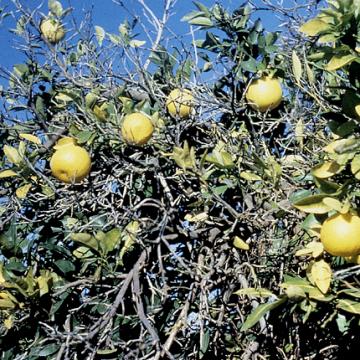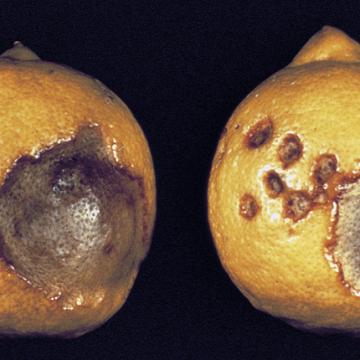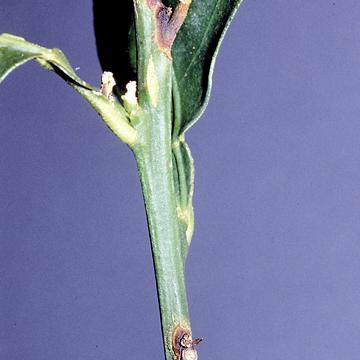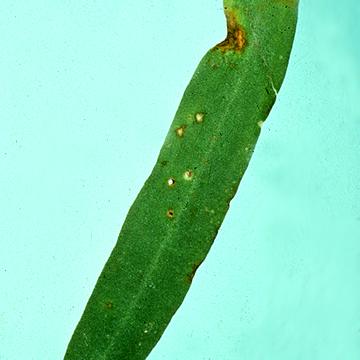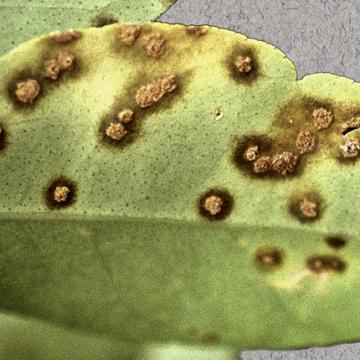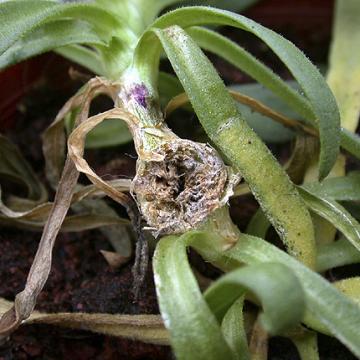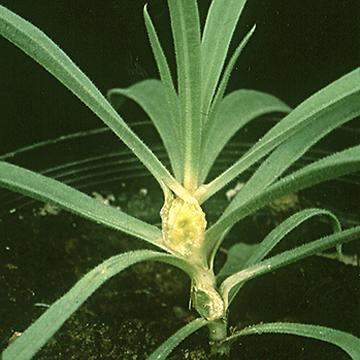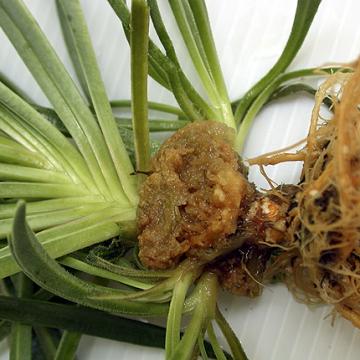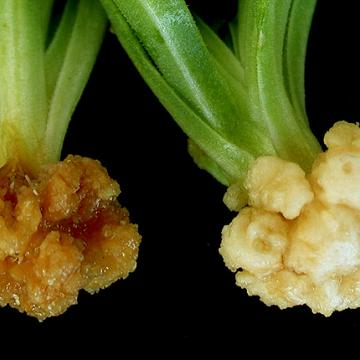DISEASE: Australian citrus dieback
HOST: Citrus (Lime)
Severe decline, a late stage of disease. The disease spreads slowly in mature trees, progressing faster in young trees.
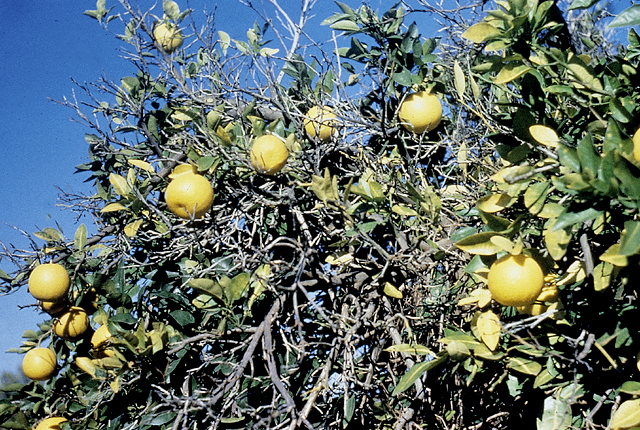
Australian citrus dieback | Citrus (Lime)
DISEASE: Australian citrus dieback
HOST: Citrus (Lime) (Citrus sp.)
PATHOGEN: 'Candidatus Phytoplasma australiense'
PATHOGEN SYNONYM: Phytoplasma Stolbur group
SOURCE: P. Broadbent
DISEASE: Bacterial blast and black pit
HOST: Citrus (Lemon)
The term "black pit" refers to black lesions on fruit, which may be specks or large, sunken pits as seen here. They also may be light tan, later becoming reddish brown to black.
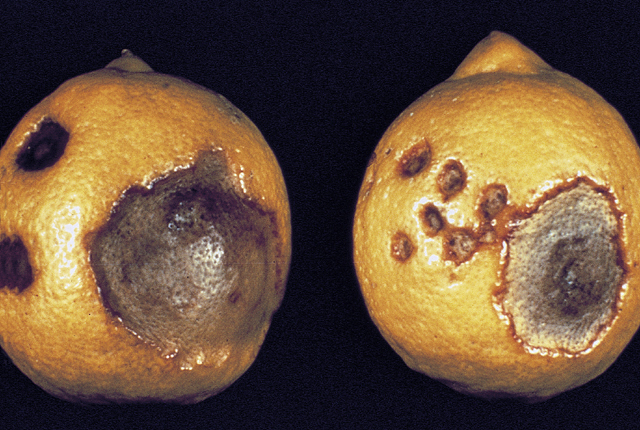
Bacterial blast and black pit | Citrus (Lemon)
DISEASE: Bacterial blast and black pit
HOST: Citrus (Lemon) (Citrus limon)
PATHOGEN: Pseudomonas syringae pv. syringae
SOURCE: J. Menge
DISEASE: Bacterial blast and black pit
HOST: Citrus (Lime)
Characteristic symptoms of brownish black lesions on twigs and leaves (blast), starting with infection of petioles. Black pit refers to brown to black sunken spots on fruit, 5 to 20 mm in diameter.
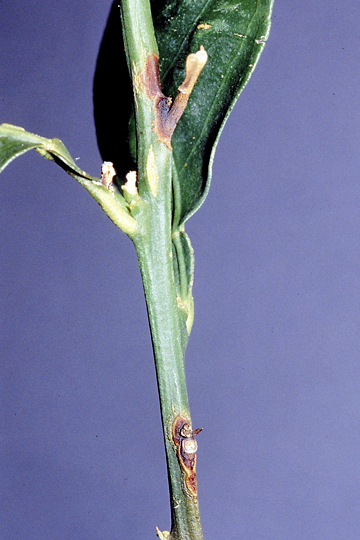
Bacterial blast and black pit | Citrus (Lime)
DISEASE: Bacterial blast and black pit
HOST: Citrus (Lime) (Citrus sp.)
PATHOGEN: Pseudomonas syringae pv. syringae
SOURCE: P. Broadbent
DISEASE: Bacterial blight
HOST: Gypsophila (Baby's breath)
Gypsophila (baby's breath) with light brown, marginal leaf lesions and distortion.
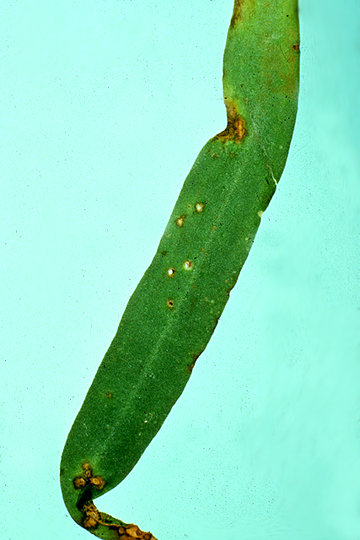
Bacterial blight | Gypsophila (Baby's breath)
DISEASE: Bacterial blight
HOST: Gypsophila (Baby's breath) (Gypsophila paniculata)
PATHOGEN: Burkholderia andropogonis
PATHOGEN SYNONYM: Pseudomonas andropogonis
SOURCE: A. Hayward
DISEASE: Citrus canker
HOST: Citrus (Lemon)
Lower leaf with raised, corkylike lesions surrounded by dark brown halos, one of the diagnostic symptoms of citrus canker.
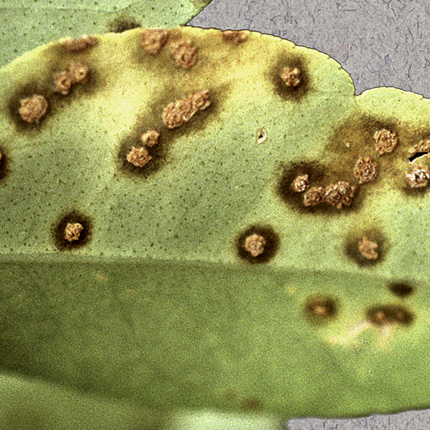
Citrus canker | Citrus (Lemon)
DISEASE: Citrus canker
HOST: Citrus (Lemon) (Citrus limon)
PATHOGEN: Xanthomonas citri subsp. citri
PATHOGEN SYNONYM: Xanthomonas citri
SOURCE: T. Gottwald
DISEASE: Gypsophila gall
HOST: Gypsophila (Baby's breath)
Gall on gypsophila stem.

Gypsophila gall | Gypsophila (Baby's breath)
DISEASE: Gypsophila gall
HOST: Gypsophila (Baby's breath) (Gypsophila elegans)
PATHOGEN: Pantoea agglomerans pv. agglomerans
SOURCE: S. Manulis
DISEASE: Gypsophila gall
HOST: Gypsophila (Baby's breath)
Gall 1 month after inoculation of stem.
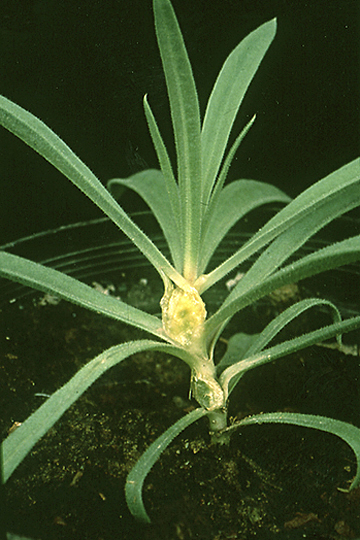
Gypsophila gall | Gypsophila (Baby's breath)
DISEASE: Gypsophila gall
HOST: Gypsophila (Baby's breath) (Gypsophila elegans)
PATHOGEN: Pantoea agglomerans pv. agglomerans
SOURCE: S. Manulis
DISEASE: Gypsophila gall
HOST: Gypsophila (Baby's breath)
Brown gall on crown of gypsophila.
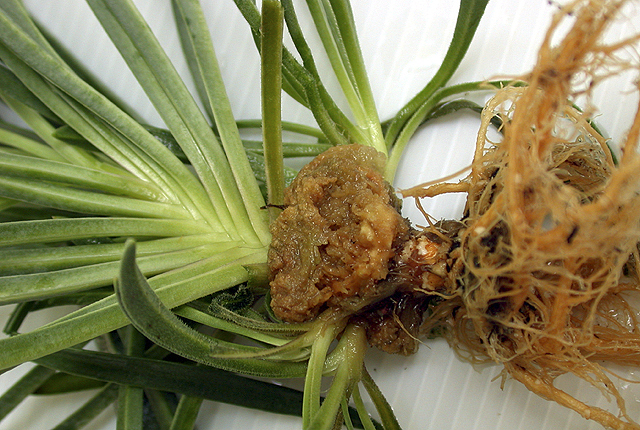
Gypsophila gall | Gypsophila (Baby's breath)
DISEASE: Gypsophila gall
HOST: Gypsophila (Baby's breath) (Gypsophila elegans)
PATHOGEN: Pantoea agglomerans pv. agglomerans
SOURCE: S. Manulis
DISEASE: Gypsophila gall
HOST: Gypsophila (Baby's breath)
Galls (left) caused by Pantoea agglomerans pv. agglomerans tend to be brownish, and those (right) caused by P. agglomerans pv. betae are white.
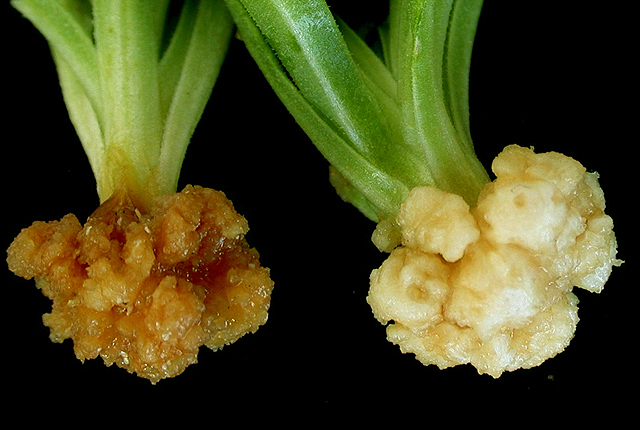
Gypsophila gall | Gypsophila (Baby's breath)
DISEASE: Gypsophila gall
HOST: Gypsophila (Baby's breath) (Gypsophila elegans)
PATHOGEN: Pantoea agglomerans pv. agglomerans
SOURCE: S. Manulis


